

Friday, December 11th, 2020.
11am PST via Zoom.
In this research the intersection between art and neuroscience primarily from the perspective of a Media Artist is explored. Neural activity creates electric and magnetic fields in the human brain and Brain Computer interfacing (BCI) gets that brain’s activity, which in turn can be used to control an application or environment. A reactive BCI is when an application generates stimuli that someone needs to focus on, which creates changes in that person's brain activity.
Another goal of this research is to develop an interface using visual perceptive EEG data to create a computational language, that is, come up with a framework that will provide sonic and/or visual output of this neurofeedback information. This is done primarily from an artist/composer (Art) standpoint while looking into cognition and perception (Science). The research project exposes some significant considerations in the use of BCI technology for artistic purposes, like how to precisely collect and process EEG data aesthetically, as well as what license I can use with the data in order to create meaning or an environment for the audience themselves to bring meaning to the artwork. The interest lies in seeing how visual perception can inform and offer new forms of expression.
This dissertation looks at artistic explorations and narratives that comes out of the BCI data, drawing on insights from fields like cognitive neuroscience, neurofeedback, biology, Brain Art and Op Art. It also presents a novel approach in creating media artworks using VEP features and multimodal interaction to explore visual and sonic output. It also documents development of Visum and Aspecta, two bio artworks by concentrating on the conceptual design, approach, methods and challenges.
The overall goal is to offer pathways within the field of human computer interaction by introducing novel sensory methods of interfacing with computer systems that aim to amplify human qualities.
Speaker: Pamela L. Jennings
Monday, December 7th, 2020 at 1pm via Zoom
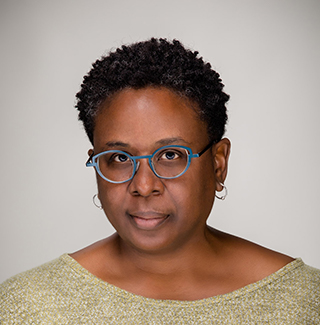
Abstract
Igniting Change: asking, &what if& and &why not& from the margins. The DRIVE to be authentic in a world that marginalizes difference requires the grit to realize your personal vision no matter the roadblocks that detour, deflect, and try to stop you. Drive is fueled by an ambition, to not be satisfied with the status quo because you are curious, you allow yourself to experience life, and you are not afraid of risk. Drive is the challenge to anyone who tries to erase you from your excellence. Drive is creating a space to ask, “what if” and “why not” from the margins. Drive is the fuel to connect and share experiences with people you might not know; you do not know well; or you would never know because of perceived differences. Stories from Pamela's global travels and encounters with world citizens speak of angst and they speak of joy. They speak of shared values and they speak of the possibilities of change.
Bio
Pamela L. Jennings, Ph.D. is nationally recognized as a thought leader for integrative research and learning across the Arts and Technology with positions and projects at a range of higher education and federal institutions. She worked as a design researcher at IBM Almaden Research Center and SRI International. She served as a National Science Foundation Program Director and led the CreativeIT program and co-led several other programs in computer science and STEM education. Pamela has been involved in several National Academies of Sciences initiatives including a committee member for the “Integration of the Humanities and Arts with Sciences, Engineering, and Medicine in Higher Education: Branches from the Same Tree” consensus report. Pamela held the first joint professorial appointment between the Fine Arts and Human Computer Interaction Institute at Carnegie Mellon University. As the CEO of CONSTRUKTS, Inc. Pamela leads the development of an IoT and mixed-reality platform for learning. Having spent countless years teaching computational technologies to artists and engineers and participating in international communities of makers and hackers, she is deeply knowledgeable in developing products that are rooted by principles of human centered design. Pamela received her Ph.D. from the Center for Advanced Inquiry in Integrative Arts, University of Plymouth School of Computing, Electronics, and Mathematics (U.K); MBA from the Ross School of Business, University of Michigan; MFA in Computer Art from School of Visual Arts, New York City; MA in Studio Art from New York University & International Center of Photography program; and BA in Psychology from Oberlin College & Conservatory.
www.pamelajennings.org/speaking.html
For more information about the MAT Seminar Series, go to: seminar.mat.ucsb.edu.
Speaker: Interspecifics
Monday, November 30th, 2020 at 1pm via Zoom
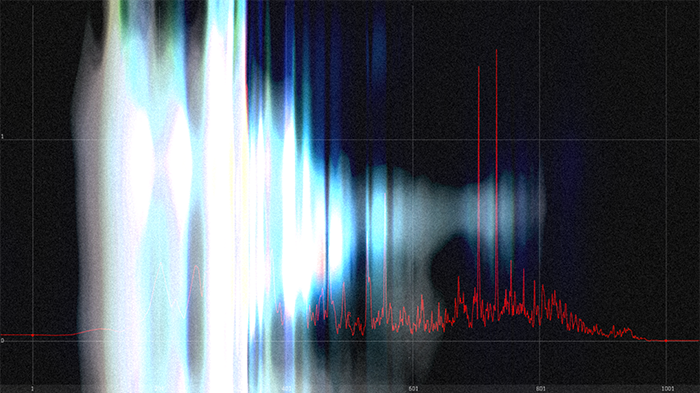
Abstract
Interspecifics presents a selection of its most recent projects, in order to analyze its creation strategies as well as the application of technologies derived from Artificial Intelligence and Machine Learning frameworks.
Bio
Interspecifics is an Independent artistic research bureau founded in Mexico City in 2013. We have focused our research on the use of sound and A.I., to explore patterns emerging from biosignals and the morphology of different living organisms as a potential form of non-human communication. With this aim, we have developed a collection of experimental research and education tools we call Ontological Machines. Our work is deeply shaped by the Latin American context where precarity enables creative action and ancient technologies meet cutting-edge forms of production. Our current lines of research are shifting towards exploring the hard problem of consciousness and the close relationship between mind and matter, where magic appears to be fundamental. Sound remains our interface to the universe. Our work has been supported by DAAD, International Cities for Advanced Sound, Laboratorio Arte Alameda, Telefonica Foundation, Bancomer BBVA Foundation, The National Fund for Culture and the Arts in México. Bauhaus-Universität Weimar and Universitat der Kunste Berlin in Germany. Museum of Modern art in Medellin in Colombia. National Council for Culture and the Arts and Museum of Contemporary art in Chile and shown at FACT Liverpool, European Congress for Artificial Intelligence in York, Spektrum, Acud Macht Neu, CTM Festival, and CLB in Berlin, ICAS Festival in Dresden, Casa del Lago, Centro Cultural de España, INDEX at the University Museum of Contemporary Art, Tamayo Museum.
For more information about the MAT Seminar Series, go to: seminar.mat.ucsb.edu.
Speaker: Kathryn E. Ringland
Monday, November 16th, 2020 at 1pm via Zoom
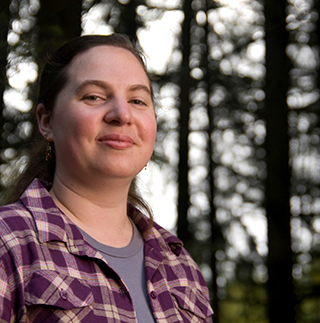
Abstract
Marginalized people, such as disabled individuals, often find themselves stigmatized and isolated. This can lead to a host of other challenges, including exacerbating current obstacles and creating new mental health concerns. My research explores how playful technology can support access to community for disabled individuals. In particular, games, such as Minecraft, are not only fun to play but can also be a place of community building and identity exploration. Communities use Minecraft as a foundation, but then also engage in a variety of other social platforms as well. In this talk, I will discuss how social technology plays a key role in facilitating access to community support and can bridge virtual and physical worlds in everyday life.
Bio
Kathryn E. Ringland is a UC President’s Postdoctoral Fellow at the University of California Santa Cruz. She holds a PhD in Informatics from the Donald Bren School of Information and Computer Sciences at the University of California Irvine. She received her B.S. in Psychology from Washington State University Vancouver. Her research interests include studying and designing technology for youth with disabilities. In her research, she is interested in how social media expands our definitions of sociality and the assistive role technology must play in our online and offline interactions.
For more information about the MAT Seminar Series, go to: seminar.mat.ucsb.edu.
Speaker: Claudia Schmuckli
Monday, November 9th, 2020 at 1pm via Zoom
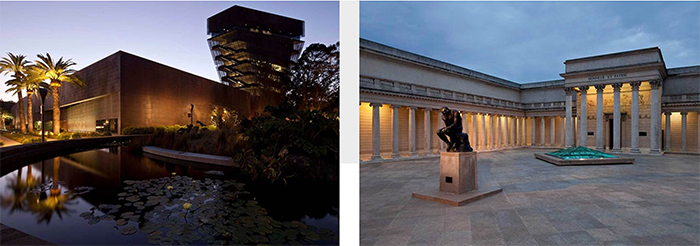
Photos: The Fine Arts Museums of San Franisco. The de Young museum (left), and the Legion of Honor museum (right).
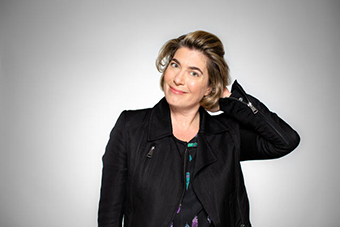
Claudia Schmuckli is the inaugural Curator-in-Charge of Contemporary Art and Programming at the Fine Arts Museums of San Francisco. Since joining the Museums in 2016, she has developed a dynamic and innovative program including dialogical exhibitions and commissions featuring DIS, Sarah Lucas, Urs Fischer, Lynn Hershman Leeson, Leonardo Drew, Matt Mullican, Ranu Mukherjee, and Alexandre Singh. Most recently she curated Specter of Disruption, an exhibition drawn from the Museums’ Collections connecting the geological and colonial underpinnings of the de Young Museum to the current conditions in Northern California, and Uncanny Valley: Being Human in the Age of AI, the first major museum exhibition in the United States to reflect on the political and philosophical stakes of artificial intelligence from an artistic perspective. Previously, she was Director and Chief Curator of the Blaffer Art Museum at the University of Houston, where she organized over thirty exhibitions including solo shows dedicated to Matthew Ronay, Analia Saban, Slavs and Tatars, Candice Breitz, Tony Feher, Johan Grimonprez, Gabriel Kuri, Chantal Akerman, and Amy Sillman among many others. Schmuckli began her career in New York as a Curatorial Assistant at the Solomon R. Guggenheim Museum and an Assistant Curator at the Museum of Modern Art. She is a Swiss citizen and holds a Master of Arts degree in art history from the Ludwigs-Maximilians-Universität in Munich, Germany.
This talk is co-sponsored by UCSB's Art, Design & Architecture Museum www.museum.ucsb.edu.
For more information about the MAT Seminar Series, go to: seminar.mat.ucsb.edu.
Speakers: CW&T
Monday, November 2nd, 2020 at 1pm via Zoom
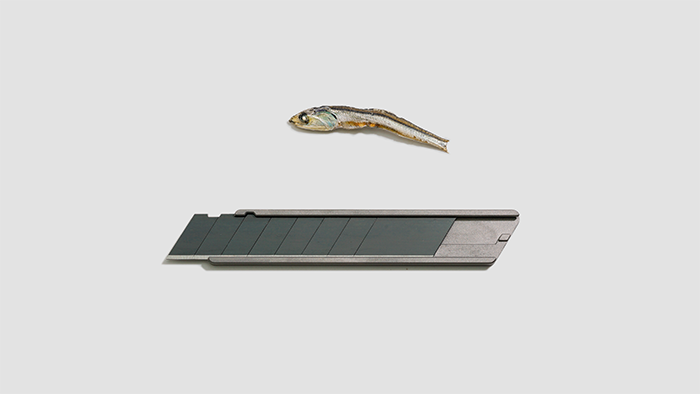
Abstract
Join us in our home/studio/shop as we meander through a selection of projects and ideas that have kept us busy and fed over the past 11 years.
Bio
CW&T is the art and design practice of Che-Wei Wang + Taylor Levy. We live in a world of our own making. It's a world where every object has its purpose, although not always purposeful, and where common objects receive uncommon consideration.
For more information about the MAT Seminar Series, go to: seminar.mat.ucsb.edu.
Speaker: Shane Denson
Monday, October 26th, 2020 at 1pm via Zoom
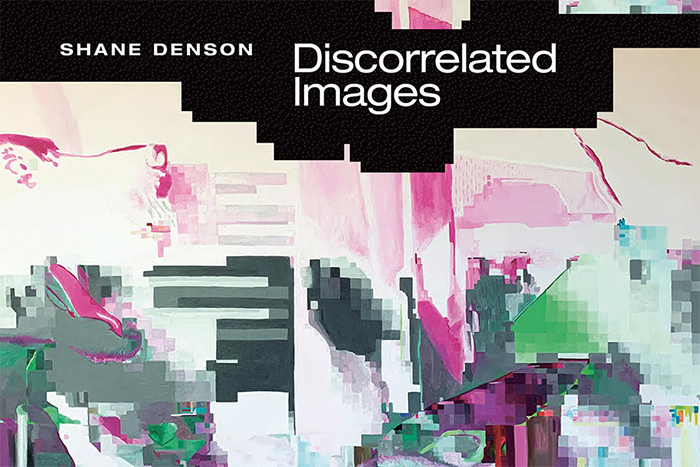
Abstract
This presentation elaborates ideas from my recent book, Discorrelated Images, which explores the transitional spacetime between cinema and post-cinema. More precisely, it probes the transformational temporal and spatial articulations of contemporary moving images and our perceptual, actional, and affective interfaces with them as they migrate from conventional forms of cinema and enter the computational systems that now encompass every aspect of audiovisual mediation. While the generation, composition, distribution, and playback of images increasingly become a matter of algorithms, software, networks, and codecs, our sensory ratios (as McLuhan called them) are being reordered, our perceptual faculties are being reformed in accordance with the new speeds and scales of imaging processes. In a post-cinematic media regime, that is, both the subjects and the objects of perception are radically transformed. Older relations—such as that between a human subject and a photographically fixed object—are dissolving, and new relations are being forged in the microtemporal intervals of algorithmic processing. With the new objects of computational images emerge new subjectivities, new affects, and uncertain potentials for perception and action.
Bio
Shane Denson is Associate Professor of Film and Media Studies and, by Courtesy, of German Studies at Stanford University. His research interests span a variety of media and historical periods, including phenomenological and media-philosophical approaches to film, digital media, and serialized popular forms. He is the author of Discorrelated Images (Duke University Press, 2020) and Postnaturalism: Frankenstein, Film, and the Anthropotechnical Interface (Transcript-Verlag, 2014) and co-editor of several collections: Transnational Perspectives on Graphic Narratives (Bloomsbury, 2013), Digital Seriality (special issue of Eludamos: Journal for Computer Game Culture, 2014), and Post-Cinema: Theorizing 21st-Century Film (REFRAME Books, 2016).
Discorrelated Images at Duke University Press
For more information about the MAT Seminar Series, go to: seminar.mat.ucsb.edu.
Speaker: Margaret Wertheim
Monday, October 19th, 2020 at 1pm via Zoom.

Abstract
What does it mean to know mathematics? In the frilled forms of corals and other crenelated marine organisms we witness structures that professional mathematicians long thought to be impossible. Defying the rules of Euclidean geometry, such “hyperbolic” surfaces are now known to exist in a wide variety of living and physical systems. For the past 15 years, science writer and artist Margaret Wertheim has been working on a project to make sculptural representations of coral reefs using the craft of crochet, thus marrying mathematics with art, science, and handiwork. Her Crochet Coral Reef – which has been widely exhibited around the world, including at the Venice Biennale – is at once a novel enterprise in radical craft practice and a global experiment in applied geometry which makes a case for embodied mathematical knowing.
Bio
Margaret Wertheim is an internationally noted science writer, artist and curator whose work focuses on relations between science and the wider cultural landscape. Her work is animated by a two-fold perspective: that science is a field of conceptual enchantment, and a socially embedded activity with political and communal consequences. The author of six books, including The Pearly Gates of Cyberspace and Physics on the Fringe, she has written for the New York Times, The Guardian, Cabinet, Aeon and many others. Margaret and her twin sister Christine are co-founders of the Institute For Figuring, a Los Angeles-based practice devoted to the aesthetic dimensions of science and mathematics. The Wertheim sisters have created exhibits for many venues including the Hayward Gallery (London), Science Gallery (Dublin), Mass MOCA (MA), and Art Center College of Design (Pasadena). Their Crochet Coral Reef – a worldwide participatory science and art project – has been shown internationally at the 2019 Venice Biennale, Andy Warhol Museum (Pittsburgh), Museum of Arts and Design (New York), Deutsches Museum (Munich), the Smithsonian (Washington D.C.), and elsewhere. Margaret has worked on all seven continents and stood on the South Pole. For her work as a science communicator she has been honored with the annual award from the American Association of Physics Teachers for "communicating the excitement of physics," and Australia’s Scientia Medal.
For more information about the MAT Seminar Series, go to: seminar.mat.ucsb.edu.
Speaker: Mike Gao
Monday, October 12th, 2020 at 1pm via Zoom.

Abstract
As a producer and music technologist, Mike Gao has crafted practical tools for making all of his music. In this lecture/presentation, he shares insights from his decade of leveraging music technology in the Los Angeles beat scene and the software he has written. Inspired by the theories of Gerald Balzano, Mike has created an iOS app for playing and understanding music and he will be exposing its inner workings. He has a BA in Electrical Engineering from USC and an MA from Stanford (advisors Julius Smith and Ge Wang).
Bio
Mike Gao 高明非 マイクガオ is a producer and music technologist from Los Angeles. He has created his own iOS apps to play and understand music. He has worked with Native Instruments as a DSP Researcher and worked with companies like Roland, Sony, WAV Media (Naver), Insomniac, Rolling Loud and more. He is currently the CTO of a music platform called matter.online and works with Kenny Beats on the DOTS platform/beat battle site (twitch.tv/kennybeats). He has done a documentary and hosted a TV show for VICE China and was part of the pilot for the first piece of video content for Spotify: Traffic Jams. His research interests are vast, from computing and electronics at the service of art and humans to 3D audioreactive experiences for live, web and mobile contexts as well as machine learning and music information retrieval, telematic and audioreactive interaction, social media and music market platforms, audiovisual methodologies for music education at the intersection of music, computing, science and design; music production and digital signal processing.
For more information about the MAT Seminar Series, go to: seminar.mat.ucsb.edu.
Date: Wednesday, September 16th, 2020.
Time: 9 am PDT, via Zoom.
Abstract
This dissertation is an investigation of a dynamic media architecture conceptual framework that focuses on information as the foundation of building form, shape, and structure.
Starting from the notion that every material object/structure embodies the information that enables its use, the computational platform facilitates exploring generative information constructs as ever-changing dynamic structures, comparable to the self-organizing systems found in nature.
A study of forms, patterns, and spaces has been undertaken for creating generative media artworks designed for amplifying the reciprocal relationship between an environment that shapes its content and content that shapes its environment.
A main focus of this research is the generation of unique forms of architecture using agent-based behaviors controlled by self-organizing systems. These unique forms of architecture determine, and are, in turn, determined by, the shape of virtual worlds/environments.
Another important focus of this research is the investigation of software platforms that provide the fundamental instruments that produce the content, and that help make and shape the virtual worlds/environments.
In a series of designs, exhibitions, and studies, a New Media Architectural Methodology is presented.
Date: Tuesday, September 15th, 2020.
Time: 10 am PDT, via Zoom.
Abstract
Ars Electronica is an annual international competition and exhibition which began in 1987, to which artists, scientists, developers, designers, entrepreneurs, and activists submit digital media arts projects to be evaluated by a jury for the Prix Ars Electronica awards. Winning projects and finalists are included in the annual exhibition viewed by the general public during the annual Festival. "Language of Technology" is a data analysis and visualization project that compares the descriptions of the winning projects with the language of the engineering-research database of the Association of Computing Machinery (ACM) proceedings over the same time period. This visualization project aims to contextualize the language and technological development in media-arts through the comparison of the two archives over a 30 year period documenting the evolution of technologies for media arts.
Exploring the Ars Electronica database by viewing projects manually (one after another) is tedious and gives little indication of the context within which these works were created, what developments in technology may have led to the creation of the work, what other projects engaged with this theme, and how this work influenced future work. To better provide this context, another database can be utilized. Similar to Ars Electronica's focus on integrating technologies, ACM strives "to raise awareness of computing's important technical, educational, and social issues around the world" (ACM).
Combining the Ars Electronica database with the database maintained by ACM allows for an analysis and visualization of both in which an investigation of the trends, relationships, and influence of technological development (and its use in the arts) can be considered. This analysis utilized standard and novel natural language processing tools in order to create a multi-modal, interactive, 3D visualization that allows users to explore the most important topics for each database and compare them in a way that promotes an exploration of the data with an eye towards relationships of correlation, causality, and possible trends.
Date: Friday, July 31st, 2020.
Time: 10 am PDT, via Zoom.
Reduced-order methods are an attractive model for physical simulation in computer graphics. They aim to reduce the computational cost of a full-rank simulation by projecting onto a reduced set of bases. However, an improper application of such methods can be unstable and scale poorly, which prevents many methods from being used in practice.
In this work, we aim to improve the scalability and stability of reduced order methods for two such scenarios. For the Eigenfluids method of fluid simulation, we show that by carefully applying the discrete sine and cosine transforms, the prohibitive scaling of its memory usage can be reduced asymptotically. The simulation is further stabilized by using a variational approach with different basis functions. We also show that the basis functions can be made quite general by extending them to spherical and polar coordinate systems. By using an orthogonalization method, we show a wide variety of basis functions can be designed that maintain fast transformations. For stochastic structure optimization, which assesses whether a fabricated object will break under real-world conditions, we show that the computation can be made asymptotically faster by carefully exploiting certain tensor structures. We then stabilize the optimization by applying an alternate basis to the function gradients.
Saturday, June 20th, 2020 at 5pm PDT via Zoom.
Show Website: bricolage.mat.ucsb.edu
Bricolage Development Team: Philip Kobernik, Ari Gilmore, Sam Bourgault, Stejara Dinulescu
Monday, June 1st, 2020 at 1pm via Zoom.
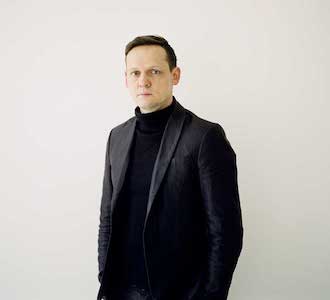
Abstract
Carsten Nicolai (aka Alva Noto) will be the guest of the final MAT SEMINAR for the 2019/2020 period. This is not going to be a regular lecture. We are asking the MAT community to study his work and materials from the available online resources and prepare questions, challenges and discussion points.
Bio
Carsten Nicolai was born 1965 in Karl-Marx-Stadt and is a German artist and musician based in Berlin. He is part of an artist generation who works intensively in the transitional area between music, art and science. Influenced by scientific reference systems, Nicolai often engages geometry, mathematics, grids and codes, as well as errors and random and self-organizing structures. After his participation in international exhibitions such as documenta X and the 49th and 50th Venice Biennales, Nicolai’s works were shown worldwide in extensive solo and group exhibitions. His artistic œuvre is also echoed in his work as a musician. With a strong adherence to reductionism he leads his sound experiments into the field of electronic music creating his own code of signs, acoustics and visual symbols. Together with Olaf Bender and Frank Bretschneider he co-founded the label 'raster-noton. archiv für ton und nichtton' and now heads the independent 'noton' label. His diverse musical projects include remarkable collaborations with Ryuichi Sakamoto, Ryoji Ikeda (cyclo.), Blixa Bargeld and Mika Vainio. Nicolai toured extensively as Alva Noto through Europe, Asia, South America and the US. Among others, he performed at the Solomon R. Guggenheim Museum in New York, the San Francisco Museum of Modern Art, Centre Pompidou in Paris and Tate Modern in London. Most recently Nicolai scored the music for Alejandro González Iñárritu’s newest film, 'The Revenant' which has been nominated for a Golden Globe, BAFTA, and Critics Choice Award. He has also collaborated extensively with Marko Peljhan since their participation at documenta X, through the series of Wardenclyffe projects, the SOLAR performances as well as the polar (2000), for which they have received the Golden Nica for interactive arts and polar [mirrored] (2010) projects. Currently, both artists are conceptualizing the 2020 iteration of the polar series.
For more information about the MAT Seminar Series, go to: seminar.mat.ucsb.edu.
Time: Friday May 29, 2020 at 12pm PDT (via Zoom).
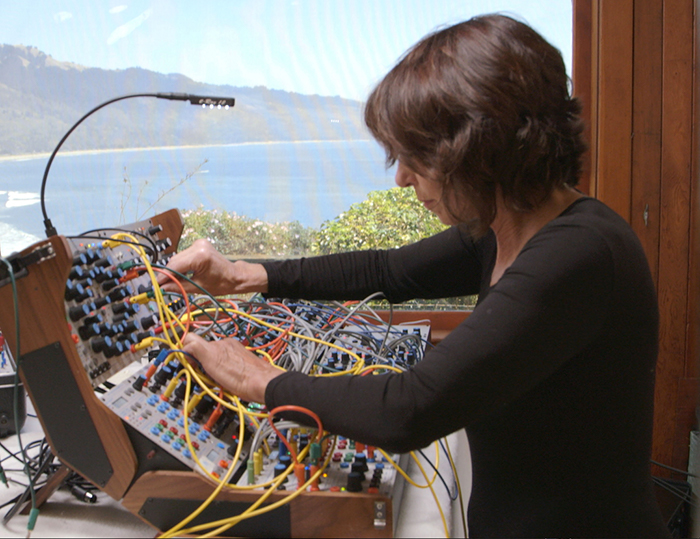
Abstract
Suzanne is a five-time Grammy award nominated composer, electronic music pioneer, and neo-classical recording artist whose work has been featured in countless commercials, video games, and feature films. Over the course of her 40+ year career, she's released 16 solo albums, including "Seven Waves," "The Velocity of Love," and most recently, her comeback quadraphonic Buchla modular synth performance recording "LIVE Quadraphonic." She's been recognized as Keyboard Magazine's "New Age Keyboardist of the Year" and was inducted into the first class of Keyboard Magazine's Hall of Fame alongside other synth luminaries, including Bob Moog, Don Buchla and Dave Smith. She’s provided the voice and sounds for Bally's groundbreaking "Xenon" pinball machine, created Coca-Cola’s pop-and-pour sound, designed Atari’s sound logo, played concerts all over the globe, and carved out a niche as one of the most creatively successful female composers in the world. A Life in Waves, a documentary about Ciani’s life and work, debuted at SXSW in 2017 and is available to watch on all digital platforms.
Ciani is a graduate of Wellesley College and holds a Masters in Music Composition from the University of California, Berkeley.
Date: Friday, May 29th, 2020
Time: 1pm
The presentation will take place on YouTube Live, followed by discussion on Zoom.
Abstract
With the invention of audio recording and digital technologies of the twentieth century, a diverse amount of experimental notations started to emerge within the electronic music domain and the visual arts fields. These notations (also known as visual scores) are well documented in two landmark compilations, published by Erhard Karkoschka (1966) and John Cage (1969). Much has changed in the electronic music field since then. New sound-making tools in both the hardware (such as modular synthesizers) and software domain (computer code) raise again new notational challenges, susceptible to be approached from different directions. This dissertation explores sound notation from a diagrammatic perspective. To support our case, we present 24 different projects (screen-based algorithmic works, performances, compositions) and 56 diagrams. From this body of work, we extracted its main components and formulated a set of principles for the construction of contemporary graphic scores. Additionally, to expand critical studies in this exciting field, this research work generates two classification systems. These taxonomies provide a new structural framework to comprehend the nature of these diagrams and go beyond sound notation as it is commonly understood.
Time: Wednesday May 27, 2020 at 12pm PDT (via Zoom).
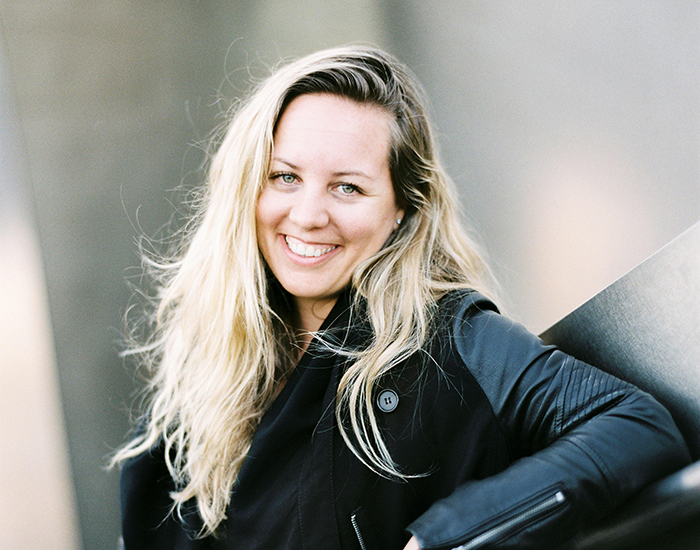
Abstract
Körner’s presentation focuses on recent innovations in 3D printing, which have revolutionized the cross-disciplinary design work of architects and fashion designers. Such novel collaborations within the fashion industry are disrupting traditional craftsmanship and empowering innovation by utilizing emergent technologies. These new methods re-form fashion production and potentially reduce shipping, carbon footprint and textile waste, and open opportunities for implementing sustainable processes in production, alongside innovative new aesthetics.
Bio
Körner is an award-winning Austrian designer, founder of JK Design GmbH and faculty member at UCLA AUD. Her recent collaborations include 3D-printed haute couture and the Academy Award-winning costumes for the film Black Panther.
Friday May 22, 2020 at 12pm PDT (via Zoom).
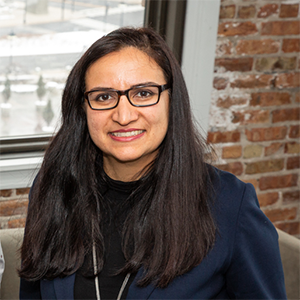
Abstract
Participatory artworks aim at creating an experience that is open to interpretation. I argue that such interpretations should not be just entirely predetermined by the creators’ expectations; rather, they should vary among audience members. I also argue that audience members that experienced the artwork could act as co-designers for the successive iterations of the artwork and broaden the creative process. In this talk, I discuss investigating these arguments with an exploratory approach aimed at transforming creative practices, by reflecting on case studies of interactive audio interfaces. Audience engagement, designers’ feedback, and reflections of expert audience members are the focus.
Bio
Visda Goudarzi is a music technologist working at the intersection of audio and human-computer interaction. She is an Assistant Professor of Audio Arts and Acoustics at Columbia College Chicago and works as the principal investigator (PI) for the Austrian funded project COLLAB (Collaborative Creativity as a Participatory Tool for Interactive Sound Creation) at Institute of Electronic Music and Acoustics (IEM) in Graz, Austria. Prior to Columbia College she worked as an artistic and scientific researcher at IEM Graz, Center for Computer Research in Music and Acoustics (CCRMA) at Stanford University, and Vienna University of Technology. Her research interests include auditory interfaces, interactive and participatory design, sound and music computing, live coding, and data sonification. Visda holds a Ph.D. in Sound and Music Computing from (IEM) at University of Music and Performing Arts Graz, Masters degree in Music, Science, and Technology from (CCRMA) at Stanford University, and a Masters degree in Computer Science from Human Computer Interaction Group at Technical University of Vienna.
For more information about the MAT Seminar Series, go to: seminar.mat.ucsb.edu.
Speaker: Laila Shereen Sakr
Monday, May 18th, 2020 at 1pm via Zoom.
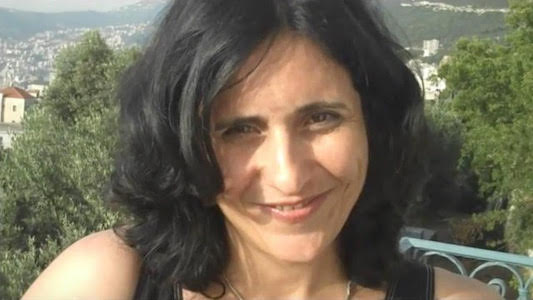
Abstract
My notion of the glitch follows from a certain understanding of the double valance of technology. To see the double-edge of technology; to understand how the iterative design process, a procedural one, is at work in reproduction of culture —this is the technological imagination. Technology is on one hand, reiterating the past, and, on the other hand, innovating a new assemblage. It is in these difficult friction points—the double-edge of technology—where this paper will argue that change and new knowledge are experienced.
Bio
Known for creating R-Shief software and performing as the Arabic-speaking cyborg VJ Um Amel, Laila Shereen Sakr is Assistant Professor of Media Theory & Practice at University of California, Santa Barbara. At UCSB, she co-founded Wireframe, a new digital media studio that supports critical game design and digital arts practice. Her current book project theorizes “glitch” as an experience of revolution and counterrevolution that occurred across the Arab world and reveals the indispensability, the promises, and the limits of digital communication across borders and languages. Sakr has shown in solo and group exhibitions and performances at galleries and museums including the San Francisco MoMA, National Gallery of Art in Jordan, Camera Austria, Cultura Digital in Brazil, Kirchner Cultural Centre in Argentina, Tahrir Cultural Center in Egypt, Fridge Art Gallery in Washington, DC, and 100 Copies in Egypt, among other venues. Her journal articles appear in Middle East Critique, Cinema Journal Teaching Dossier, Networking Knowledge: Journal of the Media, Communication, and Cultural Studies, Parson’s Journal for Information Mapping, Thoughtmesh: Critical Code Journal, and Feminist Debates in Digital Humanities.
Over the last two decades, she has been a leading voice in the open source movement, in particular for Arabic localization. She is Co-Editor for the open access journal: Media Theory, and also for After Video published by Open Humanities Press. She collaborates with MIT’s Global Media Technologies & Cultures Lab as a Researcher. At UCSB, she is Faculty Affiliate in the Feminist Studies Department and the Center for Responsible Machine Learning, and serves on the advisory, executive, and steering committees for UCSB Digital Arts & Humanities Commons, Center for Middle East Studies, and Center for Information Technology & Society. Reviews of her digital media appear in The Wall Street Journal, Science, The Chronicle of Higher Education, Fast Company, The Huffington Post, The Guardian, Voice of America, Al-Ahram, Art Territories, Digital Media and Learning, Egypt Independent, Mada Masr, Jadaliyya, Medium, and The Creators Project.
For more information about the MAT Seminar Series, go to: seminar.mat.ucsb.edu.
Time: Friday May 15, 2020 at 12pm via Zoom.
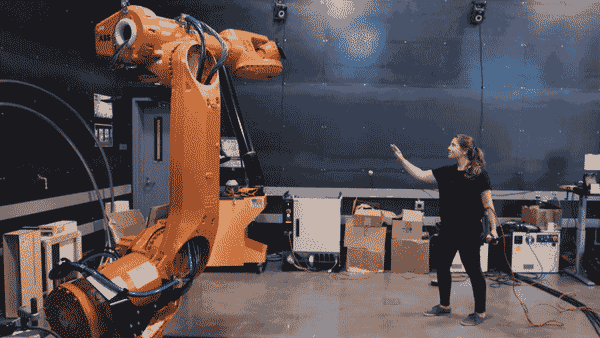
Abstract
After 50 years of promises and potential, robots are beginning to leave the lab to live in the wild with us. But how should we coexist with these intelligent, autonomous machines? In this talk, Dr. Madeline Gannon discusses how art and technology are merging to forge new futures for human-robot relations. She shares her work in convincing robots to do things they were never intended to do: from transforming a giant industrial robot into a living, breathing mechanical creature, to taming a horde autonomous robots to behave more like a pack of animals. By pushing the boundaries of human-robot interaction, her work shows that robots can not only be useful, but meaningful additions to our everyday lives.
Bio
Dr. Madeline Gannon is a multidisciplinary designer inventing better ways to communicate with machines. In her work, Gannon blends knowledge from design, robotics, and human-computer interaction to innovate at the intersection of art and technology. Gannon designs her research to engage with wide audiences across scientific and cultural communities: her work has been exhibited at international cultural institutions, published at ACM conferences, and covered by diverse global media outlets. Her 2016 interactive installation, Mimus, even earned her the nickname, "The Robot Whisperer." She is three-time World Economic Forum Cultural Leader, and serves as a council member on the World Economic Forum Global Council for IoT, Robotics, & Smart Cities. Gannon holds a Ph.D. in computational design from Carnegie Mellon University, a master's in architecture from Florida International University, and is a Research Fellow at the Frank-Ratchye STUDIO for Creative Inquiry at Carnegie Mellon University.
Speaker: Angus Forbes
Monday, May 11th, 2020 at 1pm via Zoom.
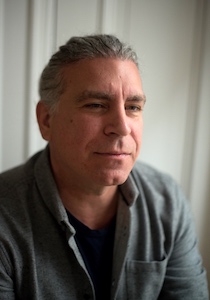
Abstract
This talk provides an overview of some of the ongoing research and creative projects taking place at the Creative Coding Lab at UC Santa Cruz. The projects include: a novel computational model based on the Physarum Polycephalum slime mold to map the structure of the Cosmic Web; a reduced precision neural network architecture for image reconstruction; and an interactive art tool that provides insight into the features learned by a style transfer network trained on different source images, among others.
Bio
Angus Forbes is an associate professor in the Department of Computational Media at UC Santa Cruz, where he directs the Creative Coding Lab. Angus helps to organize the IEEE VIS Arts Program and was the ACM SIGGRAPH Arts Papers chair in 2018. In 2021, he will serve as the SIGGRAPH Art Gallery Chair.
creativecoding.soe.ucsc.edu/news.php
For more information about the MAT Seminar Series, go to: seminar.mat.ucsb.edu.
Friday May 8, 2020 at 12pm via Zoom
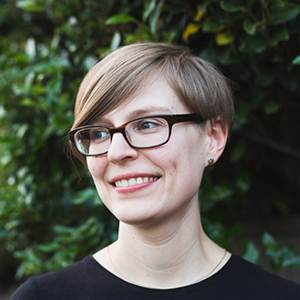
Abstract
Recently, there has been an explosion of interest in machine learning algorithms capable of creating new images, sound, and other media content. Computers can now produce content that we might reasonably call novel, sophisticated, and even compelling. When researchers, artists, and the general public discuss the future of machine learning in art, the focus is usually on a few basic questions: How can we make content generation algorithms even better and faster? Will they put human creators out of a job? Are they really making ‘art’? In this talk, I propose that we should be asking a different set of questions, beginning with the question of how we can use machine learning to better support fundamentally human creative activities. I’ll show examples of how prioritising human creators—professionals, amateurs, and students—can lead to a new understanding of what machine learning is good for, and who can benefit from it. For instance, machine learning can aid human creators engaged in rapid prototyping of new interactions with sound and media. Machine learning can support greater embodied engagement in design, and it can enable more people to participate in the creation and customisation of new technologies. Furthermore, machine learning is leading to new types of human creative practices with computationally-infused mediums, in which a broad range of people can act not only as designers and implementors, but also as explorers, curators, and co-creators.
Bio
Dr. Rebecca Fiebrink is a Reader at University of the Arts, London, where she designs new ways for humans to interact with computers in creative practice. Fiebrink is the developer of the Wekinator, open-source software for real-time interactive machine learning whose current version has been downloaded over 25,000 times. She is the creator of a MOOC titled “Machine Learning for Artists and Musicians,” which launched in 2016 on the Kadenze platform. Much of her work is driven by a belief in the importance of inclusion, participation, and accessibility: she works frequently with human-centred and participatory design processes, and she is currently working on projects related to creating new accessible technologies with people with disabilities, designing inclusive machine learning curricula and tools, and applying participatory design methodologies in the digital humanities. Dr. Fiebrink previously taught at Goldsmiths, University of London and at Princeton University. She has worked with companies including Microsoft Research, Sun Microsystems Research Labs, Imagine Research, and Smule. She has performed with a variety of musical ensembles, including as a laptopist in Sideband and Squirrel in the Mirror, the principal flutist in the Timmins Symphony Orchestra, and the keyboardist in the University of Washington computer science rock band "The Parody Bits.” She holds a PhD in Computer Science from Princeton University.
For more information about the MAT Seminar Series, go to: seminar.mat.ucsb.edu.
Speaker: Ge Wang
Monday, May 4th, 2020 at 1pm via Zoom.
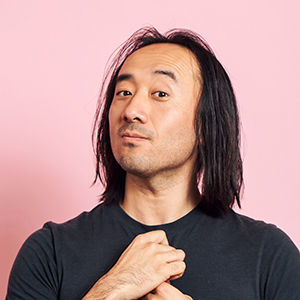
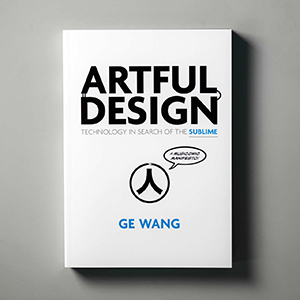
Abstract
How might the shaping of technology make our lives richer and more meaningful? This presentation (with live demos) is a journey through the design of everyday tools, musical instruments, games, and social experiences -- working at the intersection of HCI, design, art, the humanities and social science. It is a story on how we shape technology, and how technology, in turn, shapes us and our society.
Bio
Ge Wang is an Associate Professor at Stanford University in Music, Computer Science, and the Center for Computer Research in Music and Acoustics (CCRMA). He researches the artful design of tools, instruments, toys, games and social experiences. Ge is the architect of the ChucK music programming language, director of the Stanford Laptop Orchestra and the CCRMA VR Design Lab, co-founder of Smule, and designer of the Ocarina and Magic Piano apps for mobile phones. He is a 2016 Guggenheim Fellow and the author of ARTFUL DESIGN: TECHNOLOGY IN SEARCH OF THE SUBLIME (2018), a photo comic book about the ethics and aesthetics of shaping technology.
For more information about the MAT Seminar Series, go to: seminar.mat.ucsb.edu.
Speaker: Kayla DesPortes
Monday, April 27th, 2020 at 1pm via Zoom.
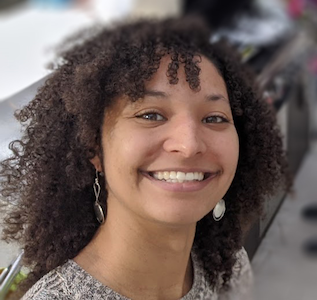
Abstract
Participation in computing across gender, race/ethnicity, and socio-economic status is far from equitable. This equity matters because it determines who gets to develop technology. Artistic computing environments is one lens to explore inequities that exist within the design of learning experiences. Artistic practices offer reflective processes that can enable learners to draw on their own values and cultures within the learning experience; while computing technology provides various new media for learners to express themselves. In this talk, Dr. DesPortes will present her research investigating these interdisciplinary spaces that span across poetry, photography, dance, data science, electronics, civic engagement, and programming. She will discuss insights from co-designing these spaces with artists, working with learners across these disciplines, and report on the challenges and opportunities within these domains.
Bio
Dr. Kayla DesPortes is an Assistant Professor of Human-Computer Interaction and the Learning Sciences at New York University. Her research vision is to use computing education to empower learners who are typically marginalized by technology. In her work, she applies a variety of participatory methods to design and study artistic computing learning environments and the technology that supports them. She works in collaboration with educators, learners, artists, and community organizations. This work has led her to explore ways for learners to leverage their cultures and values as they build expressive designs with computing. She received her PhD in Human-Centered Computing from Georgia Institute of Technology in 2018 and a B.S. in Electrical Computer Engineering from Cornell University in 2010. Dr. DesPortes has received funding from the National Science Foundation to support the exploration of physical computing, data science, machine learning, and dance learning environments (STEM+C #1933961), as well as funding to investigate the co-design of data science curriculum with art and math teachers (DRK12 #1908557).
For more information about the MAT Seminar Series, go to: seminar.mat.ucsb.edu.
Speaker: Dan Baciu
Monday, April 20th, 2020 at 1pm via Zoom.
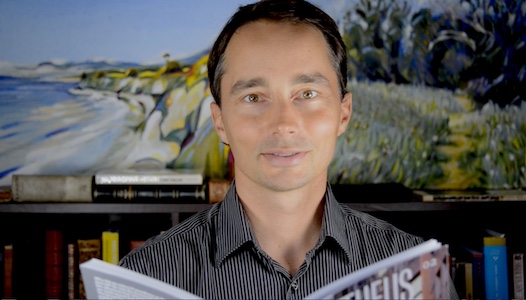
Abstract
Culture is the integration of thought shared by entire collectives of people. In my research, I ask how entire groups of authors and audiences shape culture: What is it that evolves; what rules can be observed; and how are multiple observations related to each other? Answering these questions requires not only exact thinking and hypothesis testing but also the ability to visualize predictions, first in your mind’s eye, and second by collecting data, decoding, analyzing, synthesizing, and rendering on the computer screen. This present lecture summarizes some of my theoretical propositions as well as empirical testing, focusing in particular on a visual tool for geographical analysis of public media. I also give an outlook on how this geographical interface is intended to become a cultural radar that shows how culture grows towards you and could attract the same breadth of audience as a regular rain radar.
Bio
"United we stand" inspires not only collaborative spirit but also a new research direction in the study of urban life and diversity. “United” in this context means listening to everyone and learning to coordinate efforts in the making and spreading of culture. Through art, art shows, creative writing, architecture, criticism, editorial work, photography, teaching, data science, supercomputing, urbanism, as well as doctorate and postdoctorate Dan C. Baciu has probed and shaped this research direction. His doctoral project "From Everything Called Chicago School to the Theory of Varieties" was awarded cross-national grants and science support paving the path to the WhatEvery1Says Interpretation Laboratory at UC Santa Barbara. There, Dr. Baciu brings together an entire interdisciplinary team of designers, data scientists, urban geographers, historians, English scholars, and beyond. In a time of rapid urbanization, data overload, and revolutionary wealth, as Alvin and Heidi Toffler contemplated, understanding how culture evolves on a large scale will prove increasingly important. When fake news shakes the modern world, and when companies are no longer valued for their transaction volume alone, but also for the data that they amass, we can no longer refrain from studying how people estimate the value of the messages that they read, write, rewrite, and share. Culture is the only means by which we can strike a balance between revolutionary wealth on one hand and decaying ecosystems, losses in biodiversity, epidemics, and depletion of natural resources on the other. Understanding culture on a global scale can no longer be postponed.
For more information about the MAT Seminar Series, go to: seminar.mat.ucsb.edu.
Speaker: Randy Jones
Monday, April 13th, 2020 at 1pm via Zoom.
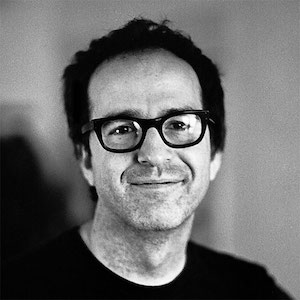
Abstract
In this talk I’ll share some of the work on music software and hardware I’m doing at Madrona Labs and discuss the design principles that guide it. Making audio tools presents unique challenges, and humane design has been a useful framework for developing solutions. That’s sort of the “first, do no harm” foundation of design. With it in place we can move on to new ways to support, delight and inspire the composer or player. Though the boundaries between the tools and what I’m doing with them have in general been clear, some ideas from my past audiovisual work are making their way into the tools. I’ll show a little of this work and talk about who and what influenced it.
Bio
Randy Jones started writing programs to make music when he got his first computer in the early '80s, and never stopped. He has performed live audiovisuals at events including Cinema by Design (Seattle), Decibel (Seattle), Media-Space (Stuttgart), Festival de Música Electroacústica (Havana), Mutek (Montréal), New Forms Festival (Vancouver), Technicolor (Berlin), and Transmissions (Chicago).
Other projects have included writings and lectures on computer-mediated performance, tour visuals for the band Radiohead, and motion visual design for a permanent installation at the Seattle Public Library. From 2000-2004 he worked with Cycling '74 to create Jitter, a graphics and matrix-processing addition to Max/MSP. In 2008 Randy founded Madrona Labs, where he and colleagues create hardware and software for computer music. He lives in Seattle.
For more information about the MAT Seminar Series, go to: seminar.mat.ucsb.edu.
Speakers: Matthew Biederman & Pierce Warnecke.
Monday, April 6th, 2020 at 1pm via Zoom.
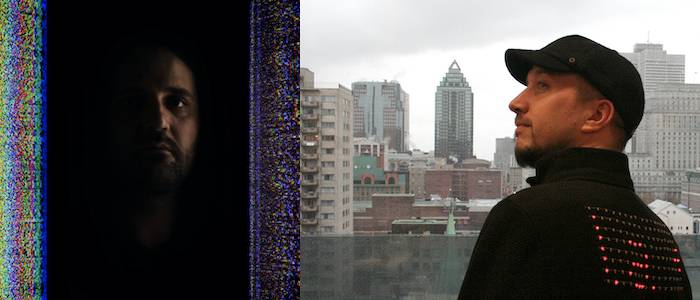
Abstract
The lecture will center on the collaborative Audio-Visual practice of Pierce Warnecke and Matthew Biederman covering their generative installation and performative works. By giving equal focus to both sound and video, their work puts the theme of each piece at the forefront. Through a review of their history working together from different continents, the talk will explore conceptual underpinnings, technical overviews and relationships with contemporary music and visual culture.
Matthew Biederman
Matthew Biederman has been performing, installing and exhibiting works, which explore themes of perception, media saturation, and data systems from a multiplicity of perspectives since the mid nineties. Biederman was the recipient of the Bay Area Artist Award in Video by New Langton Arts in 1999, First Place in the Visual Arts category of Slovenia’s Break21 festival. He has served as artist-in-residence at a variety of institutions and institutes, including the Center for Experimental Television on numerous occasions, CMU’s CREATE lab, the Wave Farm and many more.
He has since co-founded the Arctic Perspective Initiative, with Marko Peljhan, in 2007, a non-profit, international group of individuals and organizations, whose goal is to promote the creation of open authoring, communications and dissemination infrastructures for the circumpolar region. While working at the intersection of art, science and community, API also has been included in group exhibitions and biennales worldwide, as well as several European solo exhibitions, one of which was named as a ‘Top 10’ of 2010 by ARTFORUM magazine (Arctic Perspectives, HMKV Dortmund).
His works have been exhibited in the US, South America, Europe and Japan, in a variety of festivals and venues such as 7 ATA Festival Internacional (Lima), the 11th Lyon Bienniale, the 2011 Quebec Trienniale, 2014 Montreal Bienniale (Musee des Arts Contemporain), Bienniale of Digital Art (BIAN, Montreal), Artissima (Turin, IT), Moscow Biennale, Art and Alternative Visions (Tokyo) and Sonic Acts (NASA, Amsterdam) among others. As a film and video maker, his works have been included in the FILE festival (Sao Paulo), New Forms Festival (Vancouver), the Edinburgh Fringe Festival, Paris/Berlin International Meetings, and the Chicago Underground Film Festival. His public works have been shown at the ZeroOne2006 Festival (San Jose US), the SCAPE Biennial in New Zealand as well as producing custom commissions. He has collaborated with musicians as a visual artist since 1999, performing at the historic Theatre du Chatelet in Paris, as well as Ars Electronica, AV Festival, Elektra, Mutek, Futuresonic, FILE and many, many more. His works are included in public, corporate and private collections in North America.
Biederman is currently represented by Art45 and lives and works in Montreal, Quebec.
Pierce Warnecke
Pierce Warnecke is sound and video artist from the US, based in Europe for over a decade. He works equally in the sonic and visual domains via performances, installations and compositions. In addition to his solo works he collaborates with Frank Bretschneider, Matthew Biederman Keith Fullerton Whitman and more. He has received supporting grants from Germany, Canada, the European Union and France. He currently works as a professor at Berklee Valencia, Spain. Pierce has presented his works in many international festivals and spaces, such as MUTEK, ZKM, Sonic Acts, KW Institut Berlin, CTM Festival, Elektra, NEMO and more. He has released music on raster-media and Room40 and is represented by CTM’s DISK Agency.
For more information about the MAT Seminar Series, go to: seminar.mat.ucsb.edu.
Speaker: George Legrady
Monday, March 30th, 2020 at 1pm via Zoom.
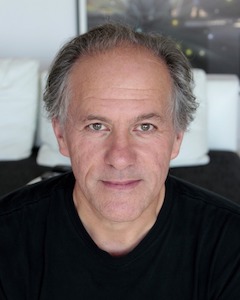
Abstract
The projects I realize as a digital media artist and academic circulate in overlapping but distinctive contexts. They include the contemporary art world (fine art galleries & museums exhibitions, journal publications), the digital media arts field (Ars electronica, International Society of Electronic Arts, etc.), academic conferences, publications (College Art Association, Leonardo, etc), and engineering-connected (IEEE Vis, Siggraph, ACM Multimedia, etc.). The artistic works are realized within the framework of George Legrady Studio, and the collaborative research works with MATP students occurs through the Experimental Visualization Lab. In this presentation I will review some projects of the past twenty years and address issues of marketing, funding, intellectual property assignment, interdisciplinary and others.
Bio
George Legrady is a digital media artist who directs the Experimental Visualization Lab dedicated to explorations in computation photography, data visualizations and digital interactive installations. A pioneer since the mid-1980s in bridging computation with issues of photographic representation, his contribution to the field has been in intersecting cultural content with data processing to create new forms of representations. He is an internationally exhibiting artist whose practice and research have been supported by a Guggenheim Fellowship, Creative Capital Foundation, National Science Foundation, National Endowment of the Arts, the Daniel Langlois for Art, Science & Technology, and the Canada Council for the Arts.
Formerly chair of the Media Arts & Technology Program, he has previously held faculty positions at the University of Southern California, California Institute of the Arts, UCLA, San Francisco State University, Merz Akademie in Stuttgart Germany, University of Western Ontario, Canada, the Nova Scotia College of Art & Design, Canada, and the National Academy of Fine Arts, Budapest, Hungary.
His artworks are in the collection of the San Francisco Museum of Art, Los Angeles County Museum of Art, National Gallery of Canada, Santa Barbara Museum of Art, musée d’art contemporain in Montreal, Philbrook Museum of Art, Smithsonian Institution, ZKM (Center for Art and Media), 21c Museum and others.
For more information about the MAT Seminar Series, go to: seminar.mat.ucsb.edu.
Date: Friday, March 13th, 2020
Time: 11am
Location: Room 2611 (Experimental Visualization Lab), Elings Hall
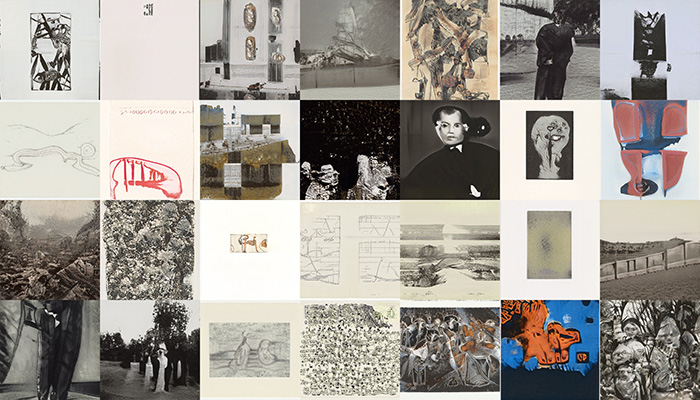
Abstract
Deep convolutional neural networks (CNNs) have become one of the most commonly used machine learning tools. Their ubiquity, however, has also given rise to a new class of technical images: images that are not processed but produced by such networks. Parallel to the unprecedented rise of image processing with deep convolutional neural networks, CNN-based machine learning systems have emerged that act as image-making machines. However, rather than picking up on the analytical challenges that these systems present, research in media philosophy and the digital humanities has been almost exclusively preoccupied with broad and general critiques of artificial intelligence as a speculative technology.
At the same time, neural network images have become an essential part of the public perception of artificial intelligence because they act as image interfaces, as gateways to otherwise inherently opaque technical systems that are not only complex but which require an entirely different set of analytical tools. Exactly because of this inherent opacity, generative machine learning in its current form started as visualization - "deep dream", for instance, is really feature visualization without specific optimization targets.
From this hybrid origin emerge significant questions of representation and interpretation that are not only aesthetic in nature: with the increasing utilization of image-making CNNs in the sciences they turn into epistemological questions about invention, discovery, and the location of knowledge.
Neural network images should thus not only be considered a "natural" domain of humanist inquiry, but their analysis and critique is as relevant - and increasingly as political - as the analysis of explicit bias in AI systems that has received much more recognition in the past few years. The dissertation thus presents the first comprehensive analysis of neural network images and their epistemic, aesthetic, and, by extension, political implications, from the hybrid perspective of media philosophy and the digital humanities.
Speaker: Yukiko Shikata
Time: Monday, March 2nd, 2020 at 1pm.
Location: Elings Hall, room 1605.
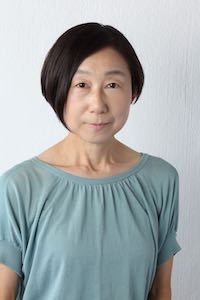
Abstract
In my 30 years experiments of curating media arts, I have been focusing on the notion of "Information Flows", not only of digital data but of various entity and phenomena, in regarding the emergence and transformation of the world by dynamic relations between them. Especially since "3.11" in 2011 (The Great East Japan Earthquake, followed by tsunami, and caused the severe accident of Fukushima Daiichi Nuclear Plant), I have been researching how Japan has interpreted the modernization. This made me think more intensively of natural flows occurring since the birth of the Earth up to present and continuing to the future. Ground, stones, soils, climate, water, human-being, fauna, flora and bacteria are connective and inter-dependent in micro/macro time and space. I see the whole world as various common informations flowing autonomously without any purposes. It would be called "Flowing Commons" where each entity or phenomena is in a broader sense of "Umwelt" (Jakob von Uexküll). In the age of emerging AI, we have to face the new ecology of "Flowing Commons" beyond existing boundaries.
Bio
Curator/ critic based in Tokyo. Director of "Open Water Committee". Guest professor at Tama Art University and Tokyo Zokei University, lecturer at IAMAS (Institute of Advanced Media Arts and Sciences) and Meiji University. She researches and curate project traversing media arts, contemporary art, science, technology and society. She curated many foresight exhibitions and projects at Canon ARTLAB (1990-2001), Mori Art Museum (2002-04) and NTT InterCommunication Center [ICC] (2004-10) as well as independent projects. Recent works include SIAF(Sapporo International Art Festival) 2014, Kenpoku Art 2016 (both as curator), AMIT (Art, Media and I, Tokyo) (2014-18, Director), and “Open Water” (2020, Director/Curator). Shikata participated as a jury to many art and media art awards including Prix Ars Electronica, UNESCO Digi-Art Prize, ISEA, Nam June Paik Award, ACM Interactive Art Award and Japan Media Arts Festival. Guest Curator in Residence at Montalvo Arts Center (2019-2022).
For more information about the MAT Seminar Series, go to: seminar.mat.ucsb.edu.
Speaker: Maja Mataric
Time: Monday, March 2nd, 2020 at 1pm.
Location: Elings Hall, room 1605.
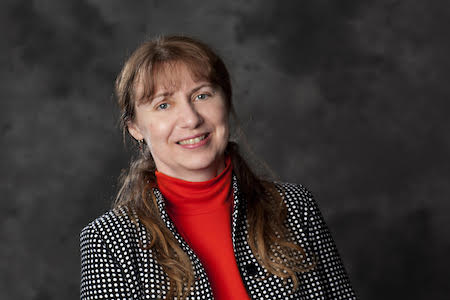
Abstract
The nexus of in-home intelligent assistants, activity tracking, and machine learning creates opportunities for personalized virtual and physical agents / robots that can positively impacts user health and quality of life. Well beyond providing information, such agents can serve as physical and mental health and education coaches and companions that support positive behavior change. However, sustaining user engagement and motivation over long-term interactions presents complex challenges. Our work over the past 15 years has addressed those challenges by developing human-machine / human-robot interaction methods for socially assistive robotics that utilize multi-modal interaction data and expressive agent behavior to monitor, coach, and motivate users to engage in heath- and wellness-promoting activities. This talk will present methods and results of modeling, learning, and personalizing user motivation, engagement, and coaching of healthy children and adults, as well as stroke patients, Alzheimer's patients, and children with autism spectrum disorders, in short and long-term (month+) deployments in schools, therapy centers, and homes, and discuss research and commercial implications for technologies aimed at human daily use.
Bio
Maja Mataric´ is Chan Soon-Shiong Distinguished Professor of Computer Science, Neuroscience, and Pediatrics at the University of Southern California, founding director of the USC Robotics and Autonomous Systems Center, and Vice Dean for Research in the Viterbi School of Engineering. Her MS and PhD are in Computer Science and Artificial Intelligence, and her BS in in Computer Science from the University of Kansas. She is Fellow of AAAS, IEEE, and AAAI, and the recipient of the US Presidential Award for Excellence in Science, Mathematics and Engineering Mentoring, Anita Borg Institute Women of Vision Award in Innovation, the Okawa Foundation Award, NSF Career Award, MIT TR35 Award, and IEEE RAS Early Career Award. A pioneer of distributed robotics and, more recently, socially assistive robotics, Prof. Mataric’s research enables robots to help people improve through empowering interaction in rehabilitation, training, and education. Her group is developing robot-assisted therapies for autism, stroke, Alzheimer's and other domains,. She has published extensively, authored “The Robotic Primer” (MIT Press), has served as associate editor on three journals, on the NSF CISE Advisory Committee, and other advisory boards. Prof. Mataric’ is actively involved in leading K-12 STEM outreach efforts that engage student interest in science, technology, engineering, and math (STEM) topics and careers.
For more information about the MAT Seminar Series, go to: seminar.mat.ucsb.edu.
Speaker: Leah Buechley
Time: Monday, February 24th, 2020 at 1pm.
Location: Elings Hall, room 1605.
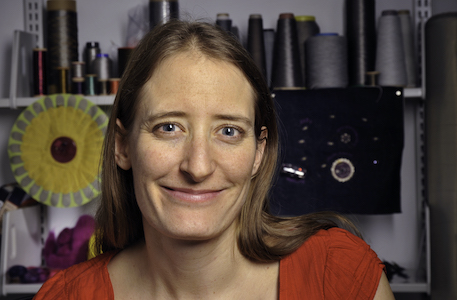
Abstract
This talk will present a series of work that blends computation, digital fabrication, and traditional ceramics making. I will explore ways that computation and fabrication can integrate with, rather than supplant, existing craft practices. More specifically, I will discuss how I use computationally generated designs and a laser cutter in conjunction with traditional slab building techniques—techniques for constructing ceramic structures out of flat sheets, or "slabs", of clay—to create novel surface patterns, textures, and 3-dimensional shapes.
This project also explores the larger topic of the relationships between technologies and cultures of making—between people and their materials and tools, both new and old. Craft traditions, rich with material and technical expertise as well as cultural meaning, are often overlooked by technologists. I will argue that we should pay much closer attention to the longstanding making traditions of different communities as we investigate new approaches to design and fabrication. Doing so presents underexplored and vital technical, aesthetic, cultural, and even civic opportunities.
Bio
Leah Buechley is an associate professor in the computer science department at the University of New Mexico where she directs the Hand and Machine research group. She is a designer, engineer, and educator. Her work explores integrations of electronics, computing, art, craft, and design. She is a pioneer in paper and fabric-based electronics and her inventions include the LilyPad Arduino, a construction kit for sew-able electronics. Previously, she was a professor at the MIT Media Lab, where she founded and directed the High-Low Tech group. Her work has been featured in publications including The New York Times, Boston Globe, and Wired and exhibited in venues including Ars Electronica, the Exploratorium, and the Victoria and Albert Museum. In 2017, her work was recognized with the Edith Ackerman award for Interaction Design and Children. Leah received a PhD in computer science from the University of Colorado at Boulder and a BA in physics from Skidmore College. At both institutions she also studied dance, theater, fine art, and design.
For more information about the MAT Seminar Series, go to: seminar.mat.ucsb.edu.
Speaker: Marko Peljhan
Time: Monday, February 10th, 2020 at 1pm.
Location: Elings Hall, room 1605.
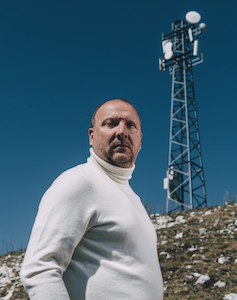
Abstract
The lecture will present a body of work and situations that Peljhan and his collaborators have been involved in over the past 20 years with a specific focus on the Earth's polar regions, probing the margins of technology, ecological thought, autonomy, privacy and biospheric strategies. Taking advantage of the notion of “systemics”, Peljhan will be revealing some of the structural background of his past, current and future endeavors. He will also be presenting details of his project that was showcased as the at the 58th International Art Exhibition, Biennale Arte 2019 in Venice, Italy.
Bio
Professor Peljhan is a theatre and radio director, conceptual artist and researcher. He founded and co-founded several still active arts organizations in the 90's such as Projekt Atol and one of the first media labs in Eastern Europe LJUDMILA. From 1994 on he worked on Makrolab, a project that focuses on telecommunications, migrations and weather systems research in an intersection of art/science/engineering; the Interpolar Transnational Art Science Constellation during the International Polar Year (2007-2009) and The Arctic Perspective Initiative. He is the recipient of many prizes for his work, including the 2001 Golden Nica Prize at Ars Electronica with Carsten Nicolai and his work has been exhibited internationally at multiple biennales (Venice, Lyon, Istanbul, Gwangju...) and festivals, at documenta, ISEA, Ars Electronica and museums and art institutions worldwide (YCAM, ICC-NT, PS.1. MOMA, GARAGE...). He serves as professor and director of the MAT Systemics Lab at the University of California Santa Barbara, the Chair of the Media Arts and Technology program at UCSB, the coordinator of international cooperation of the SPACE-SI Slovenian Centre for Space Sciences and Technologies and editor at large of the music label rx:tx. In the radio spectrum he is known as S54MX.
For more information about the MAT Seminar Series, go to: seminar.mat.ucsb.edu.
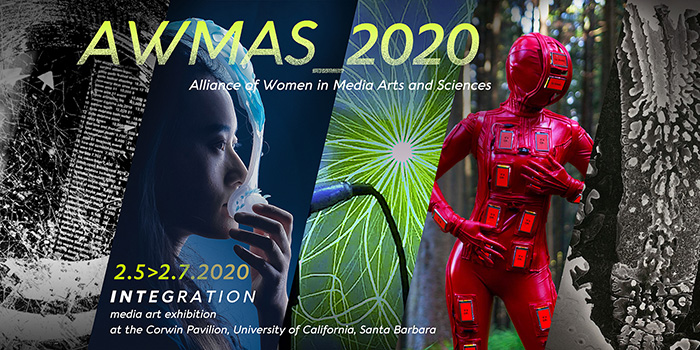
Dates
Exhibition opening: Wednesday, February 5th, 5pm – 7pm
Wednesday, February 5th, 2020, 1pm - 5pm, Art Gallery
Thursday, February 6th, 2020, 10am - 5pm, Art Gallery
Friday, February 7th, 2020, 10am - 1pm, Art Gallery
The UC Santa Barbara-based Alliance of Women in Media Arts and Sciences (AWMAS) will hold its third annual conference this week Feb. 5-7 at the Corwin Pavilion. With the goal of celebrating and promoting innovation by women in the burgeoning transdisciplinary space between science and media arts, the conference this year will focus on the theme of "Integration."
"Integration" is based on academic research and artistic works by women through transdisciplinary and interdisciplinary connections between the technical sciences and other applied sciences that influence new media art. The main goal behind this conference is to provide a platform for the exchange of ideas and experiences emerging from the intersection of science and applied art. Emphasis is placed on the various aspects of the mutual benefits of the integration and interaction between science and media arts.
Attracting leading female engineers, artists, scientists and educators from all over the world, the conference has become a thriving hub for the exchange of ideas, philosophy, research, and art. The conference is led by AWMAS founder Lena Mathew, a doctoral student in UCSB’s Media Arts & Technology graduate program, along with a team of curators from UCSB, and other institutions.
As part of AWMAS 2020, an exhibition of audiovisual art installations will be presented in the Corwin Pavilion, with guided tours by the artists at 5 pm on the first day (Feb. 5th), and self-guided tours on the following days. This will serve as the backdrop for an exciting series of lectures, paper and poster presentations, and a workshop on programming for the creation of experimental computer music. The conference will culminate in a free multimedia concert on the evening of the final day.
Artists
Sam Bourgault and Emma Forgues, Stejara Dinulescu, Maru Garcia, Elizabeth Hambleton, Riley Henningsen, Nana Klith Hougaard, Xindy Kang, Christina McPhee, Rodney & Elizabeth, Sophie Nebeker, Lauren Ruiz, Sahar Sajadieh, Tiffany Trenda, Rachel Wolfe, Yin Yu, and Weidi Zhang.
Curatorial Team
Sam Bourgault, Rodney DuPlessis, Kio Griffith, Elizabeth Hambleton, Gustavo Rincon, and Sahar Sajadieh.
The full schedule can be found here: https://awmas2020.wixsite.com/home
Time: Friday, February 7th, 2020. 3-4pm
Location: Studio Xenakis (room 2215), Music Building.
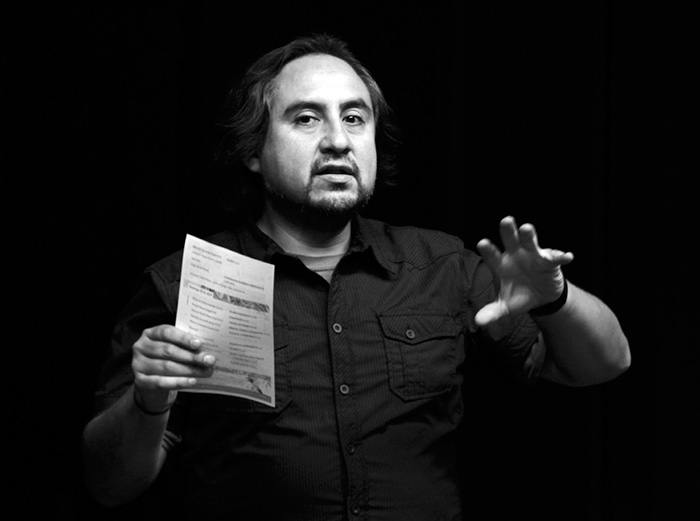
As part of the Corwin Chair Series, Rodrigo Cadiz will present a talk about interfaces and the creation of new musical instruments.
Rodrigo Cadiz obtained his doctorate in Music Technology (Ph.D) from Northwestern University, USA, under the supervision of Dr. Gary Kendall in 2006. At Northwestern he studied acoustic composition with Augusta Read Thomas and Jay Alan Yim and computer music with Virgil Moorefield, Amnon Wolman, and Gary Kendall. His research papers have been published in international conferences such as the International Conference on Music Perception and Cognition, the International Computer Music Conference, and the Conference on Interdisciplinary Musicology, and journals such as the Computer Music Journal. He has taught several computer music related courses at Northwestern and the Pontificia Universidad Católica de Chile. His research interests include audio digital processing, computer music, composition, musical perception and cognition, new interfaces for musical expression, and the musical applications of artificial intelligence.
The event is free and open to the public.
Date: Friday, January 31st, 2020
Time: 4:30pm
Location: Room 2611 (Experimental Visualization Lab), Elings Hall
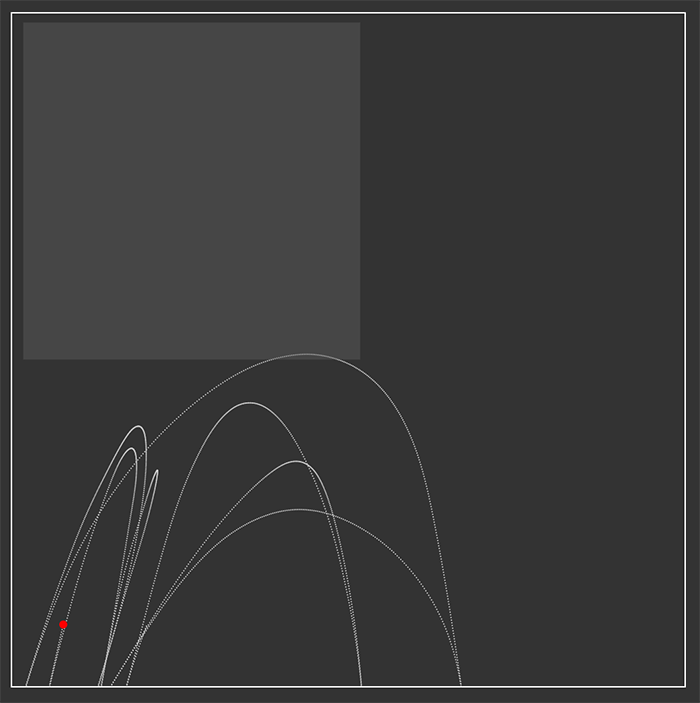
Abstract
Reinforcement learning (RL) is an efficient class of sequential decision-making algorithms that have achieved remarkable success in a broad range of applications, such as robotic manipulations, strategic games, or autonomous driving. The most well-known example of reinforcement learning is AlphaGo, a computer program that plays the board game Go and outperforms top human Go players. Unlike other two major machine learning categories, supervised learning and unsupervised learning, in which media artists are actively engaged, reinforcement learning has resulted in very few creative applications. Generative art is usually driven, in whole or in part, by autonomous systems that are derived from a set of rules. Interestingly, an RL policy can be seen as an autonomous system where the rules are learned by interacting with its environment. Regardless of its initial purpose, reinforcement learning has the potential to expand the boundary of generative art. However, an approach of applying reinforcement learning to generative art does not yet exist and the current RL tools require an in-depth understanding of RL concepts.
To bridge the gap, the first part of the dissertation introduces a conceptual framework to adapt reinforcement learning for generative art. The framework proposes a term RL-based generative art to denote a novel form of generative art of which the use of RL agents is the key element. The creative process of RL-based generative art and possible emergent behaviors are discussed in the framework. This leads to a discussion of several author's related practices on generative art, deep learning art, and reinforcement learning. The second part introduces RL5, a JavaScript library for rapidly prototyping RL environments and training RL policies in web browsers. The library combines RL algorithms and RL environments into one framework and is fully compatible with p5.js. RL5 is developed with a particular focus on simplicity to favor (re)usability of RL algorithms and development of RL environments. Specifically, the library implemented three RL algorithms, Tabular Q-learning, REINFORCE, and DDPG, to cover all the three families of model-free RL, and nine RL environments that six of them address autonomous agents in steering behaviors, which can be used as building blocks for complex systems. Finally, the author demonstrates how to apply RL5 for pedagogical and creative applications through four different use cases.
Speaker: Elliot Hawkes.
Time: Monday, February 3rd, 2020 at 1pm.
Location: Elings Hall, room 1605.
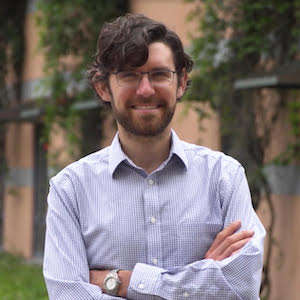
Abstract
Natural systems, such as climbing geckos and wandering vines, are incredibly robust, adaptable, and capable of handling uncertainty in their environments. These traits are unfortunately not currently true about engineered robotic systems. I will discuss efforts to learn from nature by incorporating compliance, or softness, into robots to create new functionality. I will show results from recent work, including gecko-inspired adhesives that allow a human to climb a glass wall and vine-inspired robots that “grow” through challenging environments, such as a forest of nails or, potentially, the tortuous pathways inside the human body.
Bio
Elliot W. Hawkes is an Assistant Professor of Mechanical Engineering at UCSB. Previously, he completed a postdoctoral fellowship with Prof. Allison Okamura at Stanford University, received his PhD with Prof. Mark Cutkosky, also at Stanford, and worked at the Harvard Microrobotics Lab and the ETH Multi-scale Robotics Lab. He has received a variety of awards and fellowships, and his work has received press from outlets such as the NY Times, BBC, Cell, Science, and the Late Show with Stephen Colbert.
For more information about the MAT Seminar Series, go to: seminar.mat.ucsb.edu.
Date: Friday, January 24th, 2020
Time: 1pm
Location: Room 2611 (Experimental Visualization Lab), Elings Hall
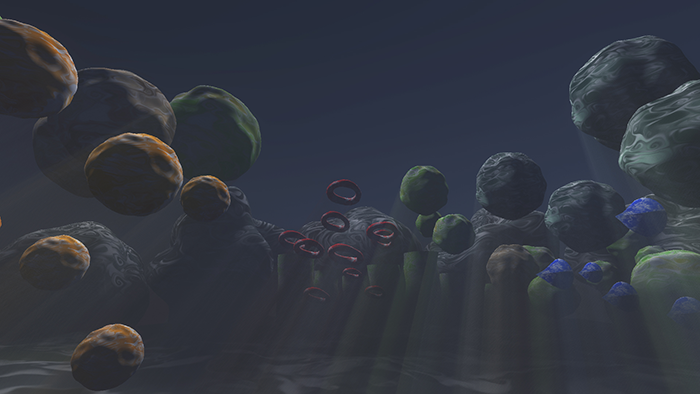
Abstract
Many forms of life in the natural world have the extraordinary capacity to sense their environments, to learn, and to remember, just as humans do, even though they are vastly different from us. In this dissertation, I presented novel techniques developed to exhibit an interactive abstract virtual reality experience that invites viewers to see the natural world from a different perspective. I developed the vertex displacement and color turbulence approaches to showcase organisms. The organisms can also modulate their shapes according to the volumes and frequencies of sound. Furthermore, the experience displays turbulent flow on the organisms’ surface to demonstrate the concept of energy flow, or vitality, among all organisms in the natural world. Another novel feature is that viewers can interact with the surface colors through ray casting from a handheld controller.
Speaker: Nadya Peek.
Time: Monday, January 27th, 2020 at 1pm.
Location: Elings Hall, room 1605.
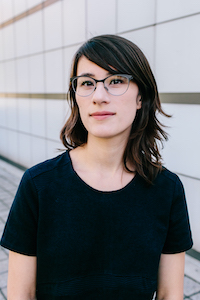
Abstract
How can we harness the precision of machines for the creativity of individuals? Digital fabrication tools promise quality production in low volume and are now accessible in maker spaces worldwide. However, the maker context is very different from the historical industrial settings in which digital fabrication was developed. Yet these differences have not led to many changes in contemporary tools. I argue that personal fabrication requires a rethinking of production infrastructure, and in this talk outline a research roadmap for machine agency.
Bio
Nadya directs the Machine Agency at the University of Washington where she is an assistant professor in Human-Centered Design and Engineering. Machines and systems Nadya has built are shared widely including at SCF, CHI, SIGGRAPH, and TEI. Nadya is an active member of the global fab lab community, making digital fabrication more accessible with better CAD/CAM tools and developing open source hardware machines and control systems. She on the board of the Open Source Hardware Association, half of the design studio James and the Giant Peek, plays drum machines and synths in the band Construction and got her PhD at MIT in the Center for Bits and Atoms.
For more information about the MAT Seminar Series, go to: seminar.mat.ucsb.edu.
Speaker: Anthony Chen.
Time: Monday, January 13th, 2020 at 1pm.
Location: Elings Hall, room 2611 (Experimental Visualization Lab).
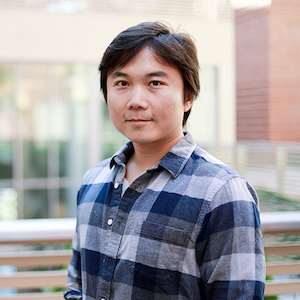
Abstract
The recent development of artificial intelligence (AI) promises a future of data-driven automation that can replace most of today’s human efforts. However, currently most AI-enabled systems—often functioning as ‘black boxes’—struggle to accommodate, learn from or communicate with humans. One fundamental problem is a limited interaction bandwidth between human and AI: currently, AI’s development is bestowed upon the few experts; for users in non-computing domains, there is limited support for them to comprehend, customize or collaborate with AI. As we are on the cusp of defining the future of human-AI relationship, it is important to create new interaction channels to bridge AI and non-computing users. In this talk, I will discuss three research thrusts for expanding the interaction bandwidth between human and AI:
Bio
Xiang "Anthony" Chen is an Assistant Professor in UCLA's Department of Electrical & Computer Engineering. Anthony's area of expertise is Human-Computer Interaction (HCI). He received his Ph.D. in the School of Computer Science at Carnegie Mellon University in 2017 and was a recipient of the NSF CISE CRII Award and the Adobe Ph.D. Fellowship. His research is at the intersection of sensing & interaction techniques, intelligent user interfaces, and computational design & fabrication. Anthony’s work has won two best paper awards and one honorable mentioned in top-tier HCI conferences.
For more information about the MAT Seminar Series, go to: seminar.mat.ucsb.edu.
Speaker: Cy Keener.
Time: Monday, January 6th, 2020 at 1pm.
Location: Elings Hall, room 1605.
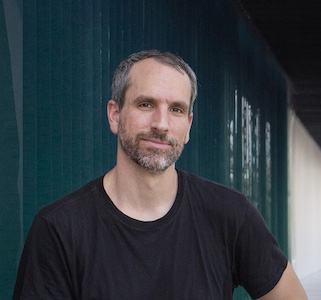
Abstract
Art and technology are powerful tools to help us record and comprehend the current climate crisis. I believe that sensors and near real-time telemetry can help us bridge the literal distance between remote locations undergoing the most drastic changes and population centers. I also believe in the potential of installation art to translate data into immersive visceral experience more impactful than charts, graphs and statistics. I will share several iterations of an ongoing collaboration with the International Arctic Buoy Programme to develop and deploy custom art / science instruments that record multi-year sea ice. I will also share early results from an effort to digitally document mountain glaciers to create an immersive virtual reality experience in collaboration with a specialist in the digital preservation of UNESCO cultural heritage sites.
Bio
Cy Keener is an interdisciplinary artist who uses environmental sensing and kinetic sculpture to record and represent the natural world. He is an Assistant Professor of Sculpture and Emerging Technology at the University of Maryland’s Department of Art. His work includes a range of data-based installations to visualize diverse phenomena including sea ice, wind, rain and ocean waves. He received a Master of Fine Arts from Stanford University, and a Master of Architecture from the University of California, Berkeley. Cy has completed commissioned installations at the Scottsdale Museum of Contemporary Art, Stanford University, Suyama Space in Seattle, and the Rubin Center for the Visual Arts at the University of Texas. Over the past year Cy has presented his work at PIKSEL, in Bergen, Norway, The Conference on Communication and Environment in Vancouver, British Columbia and the Applied Physics Laboratory at the University of Washington.
For more information about the MAT Seminar Series, go to: seminar.mat.ucsb.edu.